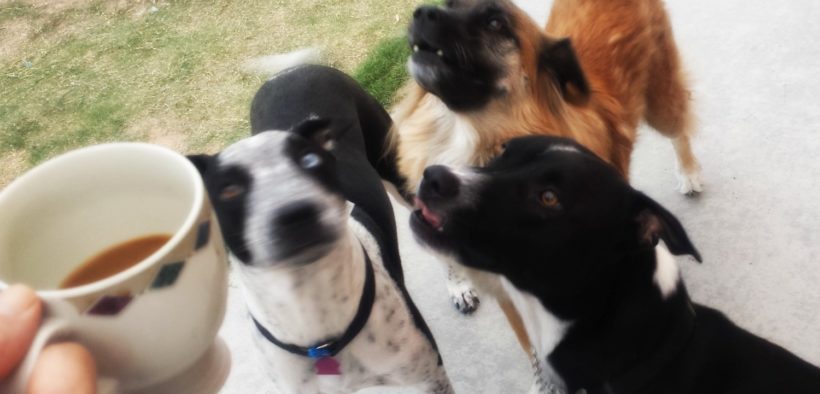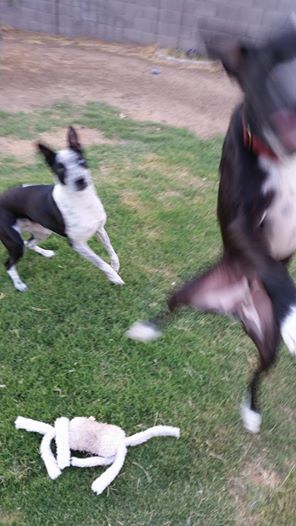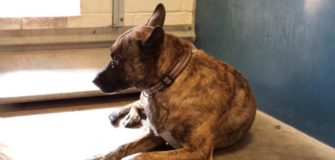Training Diaries: Preliminary Health Checks, Feeding, and Methods
Share

 When we first started out with our training diaries commitment, we wanted to ensure our pets were all healthy. After our preliminary health checks (you can read more about those here: Training Diaries: Health Checks) we also changed their diet to The Honest Kitchen (which we and they love!). This week, we began working on routine exercise (more on that next week), and have started requiring that they “work” for a living. Of course, they are all in great shape and while they don’t have any weight issues, they do have some behavioral ones.
When we first started out with our training diaries commitment, we wanted to ensure our pets were all healthy. After our preliminary health checks (you can read more about those here: Training Diaries: Health Checks) we also changed their diet to The Honest Kitchen (which we and they love!). This week, we began working on routine exercise (more on that next week), and have started requiring that they “work” for a living. Of course, they are all in great shape and while they don’t have any weight issues, they do have some behavioral ones.
We are approaching training like we would approach anything else with a family member: We’re researching the methods that we believe would work best for us, tossing out what doesn’t, and trying to avoid quick fixes, to make sure that we have a happy, healthy, cohesive family unit when it’s all said and done.
That said, we are doing our best to treat them like kids – they have “chores,” and we will offer a reward when that chore is complete. We will do our best to respect them as individuals, cater to their individual strengths and offer as many tools as we can to ensure their success. In return, we expect that they follow through, respect us as the “leaders,” and trust us to make the correct decisions.
Training Methods
We’ve also researched the Pros & Cons of Dog Training Approaches. After a great deal of feedback (thanks y’all!), we have finally settled on a few training methods. In the end, it’s sort of a mosh-posh of Amichian bonding and Milan’s “exercise” routine and Stillwell’s “+R” approaches. We are also working with some talented trainers who will be helping us through the process.

Quick Fixes
Just a note on quick fixes. I will tell you that I believe in them wholeheartedly. For the busy mom or the family who deal with the dog jumping out of the car or running through the door, a training spray is pretty effective (and very quick). However, I’m doing my best to stay away from them on this training run. We’re working on long-term problems, so we’re implementing long-term solutions. Quick fixes have their place, and I’ll never say they don’t work. They do. But it’s not often the best approach.
For example, Brock is hyper-sensitive. He simply can’t handle scary noises, loud voices, or any type of anger, resentment or abuse. This dog wants nothing more than to please us and we do our best never to lose our tempers or mix our messages. Bree, his sister, is far more lenient. Nothing gets to her – nothing upsets her. For Bree, we have to use a much different approach to training. She requires loose-leash walking, freedom to make a few decisions and the support group in place for those rare bad decisions (which I’m convinced she always regrets!). This is why it’s so important to select a learning style that matches your dog.
I hope you’ll join us on our journey! It will be lots of fun for all of us, including our pets.











